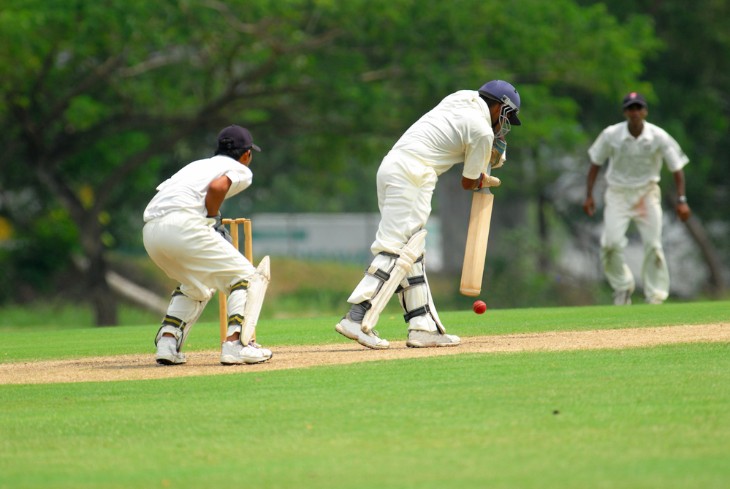- The Evolution of Cricket Broadcasting
- The Pioneers of Digital Cricket Coverage
- From Radio Waves to Pixels: Technological Advancements
- The Rise of Streaming Platforms
- The Impact of High-Definition Broadcasting
- Changing Fan Engagement: Social Media and Cricket
- Mobile Apps and the On-the-Go Cricket Experience
- Virtual Reality and Augmented Reality in Cricket
- The Globalisation of Cricket Broadcasting
- Challenges and Controversies in the Digital Age
- The Business of Cricket Broadcasting
- The Future of Cricket Broadcasting in the Digital Age
- Summary
Welcome to the fascinating world of cricket broadcasting in the digital age. In this article, we'll delve into the evolution and revolution that cricket coverage has undergone in recent years, driven by advancements in technology and the changing preferences of fans.
The Evolution of Cricket Broadcasting
Cricket has a rich history of broadcasting, dating back to the early days of radio. The crackling voices over the airwaves, describing the live action, were the lifeline for cricket enthusiasts. From there, we witnessed the transition to television, bringing the game into our living rooms.
With televised broadcasts, cricket became more accessible to the masses, opening up new opportunities for sponsorship and advertising. Stadiums grew bigger, and cricket stars became household names. However, it was only the beginning of a much larger transformation.
The Pioneers of Digital Cricket Coverage
As the digital age dawned, cricket broadcasting underwent a seismic shift. From the early days of internet streaming to the emergence of dedicated cricket websites, these trailblazers recognized the potential of the online world.
They harnessed the power of the internet to bring cricket to screens of all sizes. No longer confined to traditional television schedules, fans could now access live matches, updates, and statistics from anywhere in the world. These pioneers laid the groundwork for the digital cricket experience we know today.
From Radio Waves to Pixels: Technological Advancements
With the advent of digital technology, cricket broadcasting made significant strides. From the early days of standard definition to the crisp clarity of high-definition broadcasts, the improvement in picture and sound quality elevated the viewing experience.
Satellite technology played a pivotal role in expanding the reach of cricket broadcasts. It enabled live coverage from remote locations, making it possible for fans to witness matches from across the globe. This shift not only brought diverse cricketing cultures closer but also paved the way for the globalisation of the sport.
The transition to digital also meant that viewers had more control. The introduction of DVRs and catch-up services allowed fans to watch matches at their convenience, further blurring the lines between traditional broadcasting and on-demand content.
The Rise of Streaming Platforms
The likes of Netflix and Amazon Prime paved the way for sports streaming services. Cricket fans soon had access to dedicated platforms that offered live matches, highlights, and a wealth of cricket-related content.
These streaming services brought flexibility to the forefront. Viewers could now watch cricket on their smartphones, tablets, or smart TVs, breaking free from the constraints of traditional screens. The 'anytime, anywhere' philosophy became the norm, catering to the needs of modern, on-the-go lifestyles.
Furthermore, streaming platforms fostered competition among broadcasters, leading to innovative features like multiple camera angles, interactive statistics, and immersive commentary options.

The Impact of High-Definition Broadcasting
The transition to HD marked a significant milestone in the evolution of cricket coverage. It brought a level of visual clarity and detail that was previously unimaginable. Fans could now see every nuance of the game, from the expressions on players' faces to the intricate movements of the ball.
This upgrade in visual quality not only enhanced the viewing experience but also opened up new opportunities for advertisers and sponsors. The crispness of HD broadcasts made it possible to showcase products and brands in greater detail, making it a win-win for both the cricketing industry and advertisers.
Changing Fan Engagement: Social Media and Cricket
The digital age ushered in an era of real-time interaction, where fans could instantly share their thoughts, reactions, and opinions on social media platforms.
Platforms like Twitter, Facebook, and Instagram became virtual stadiums where fans gathered to discuss matches, players, and cricket-related news. Cricketers themselves started using social media to connect with their followers, offering glimpses into their lives beyond the field.
Hashtags, memes, and viral moments became part of the cricketing lexicon, further blurring the line between the game and its digital audience.
Mobile Apps and the On-the-Go Cricket Experience
Cricket-centric mobile apps offered features like live scores, ball-by-ball commentary, and video highlights, allowing fans to keep track of matches in real-time. These apps became indispensable companions for those who couldn't be glued to their televisions or desktop screens during matches.
Additionally, mobile apps provided a gateway to exclusive content, including interviews, behind-the-scenes footage, and in-depth analysis. They turned smartphones into portable cricketing hubs, offering a comprehensive experience for fans on the move.
Virtual Reality and Augmented Reality in Cricket
VR allowed fans to virtually step onto the cricket field, providing an immersive 360-degree view of the action. It was as if you were right there amidst the players, witnessing the game from their perspective. This technology gave rise to VR cricket experiences that transported fans into the heart of the stadium.
AR, on the other hand, enriched the viewing experience by overlaying digital information onto the live broadcast. Viewers could access player statistics, live graphics, and interactive elements in real-time. For example, AR could superimpose a player's batting average or the required run rate onto the screen, enhancing the understanding of the game.
Both VR and AR brought a new dimension to cricket broadcasting, making it more engaging and informative than ever before. These chapters showcase how these technologies expanded the horizons of cricket coverage and left a lasting impact on how we perceive and enjoy the sport.

The Globalisation of Cricket Broadcasting
The digital age dismantled geographical barriers, enabling cricket fans worldwide to access matches from different corners of the cricketing map. Online streaming and the proliferation of satellite networks made it possible for cricket enthusiasts to follow their favourite teams and players with unprecedented ease.
This global reach not only expanded the sport's fanbase but also attracted international advertisers and sponsors. Cricket became a lucrative proposition for brands seeking to tap into diverse markets. The Indian Premier League (IPL), for instance, emerged as a prime example of how cricket, coupled with digital broadcasting, became a global sporting spectacle.
Moreover, cricket boards and leagues started to recognise the potential of overseas markets, scheduling matches and tournaments to accommodate fans across time zones.
Challenges and Controversies in the Digital Age
One significant challenge has been the battle against piracy. With the proliferation of online streaming, unauthorised streams and illegal downloads have plagued the cricket broadcasting industry. Rights holders and broadcasters have had to invest in robust anti-piracy measures to protect their content and revenue streams.
Moreover, the rise of social media has brought its own set of challenges, including issues related to online abuse and trolling of players. Balancing the right to express opinions with ensuring a safe and respectful online environment for all stakeholders has been an ongoing concern.
The Business of Cricket Broadcasting
Cricket, once primarily a sporting endeavour, has now evolved into a multi-billion-dollar industry. Television rights, sponsorships, and advertising deals have become essential revenue streams for cricket boards, franchises, and broadcasters alike. The digital age has only accelerated this transformation.
Broadcasting rights have become fiercely competitive, with networks and streaming platforms bidding substantial sums for the privilege to air matches. Cricket leagues, like the IPL and Big Bash, have become major cash cows, attracting not only cricket enthusiasts but also corporate giants looking to promote their brands.
Furthermore, the advent of digital technology has enabled targeted advertising, allowing companies to reach specific demographics. This precise targeting has made cricket broadcasts even more attractive to advertisers, fuelling the sport's financial growth.
The Future of Cricket Broadcasting in the Digital Age
As technology continues to advance, we can expect further innovations in how we experience cricket. Virtual reality and augmented reality are likely to become more immersive, bringing fans closer to the action than ever before.
The globalisation of cricket will expand further, with leagues like the IPL continuing to draw international audiences. New markets will open up, presenting fresh opportunities for growth.
Challenges will persist, too. Piracy and digital security will remain concerns, and the balance between free expression and respectful discourse in the online cricketing community will need continued attention.
Summary
The landscape of cricket broadcasting has evolved drastically in the digital age. Beginning with historical broadcasts over radio and transitioning to television, the sport saw its first major transformation. With the advent of the digital era, streaming platforms, enhanced technology like VR and AR, and social media have reshaped the fan experience, offering unprecedented access and interaction. The globalisation of cricket broadcasting, driven by leagues like IPL, has expanded its fanbase and commercial potential. While opportunities abound, challenges such as piracy and digital security persist. The intersection of technology and cricket broadcasting continues to offer promising avenues for the future.
Cricket broadcasting in the digital age is a testament to the sport's adaptability and the immense potential of technological advancements. From radio broadcasts to VR experiences, the journey reflects the evolving needs and preferences of fans. The integration of digital tools, streaming platforms, and social media has enriched the viewing experience, turning cricket into a truly global spectacle. As the digital landscape continues to expand, it remains exciting to envisage how further innovations will shape the future of cricket broadcasting. One thing remains certain: cricket, with its rich legacy, is poised to embrace the digital future with open arms.
For more information:


